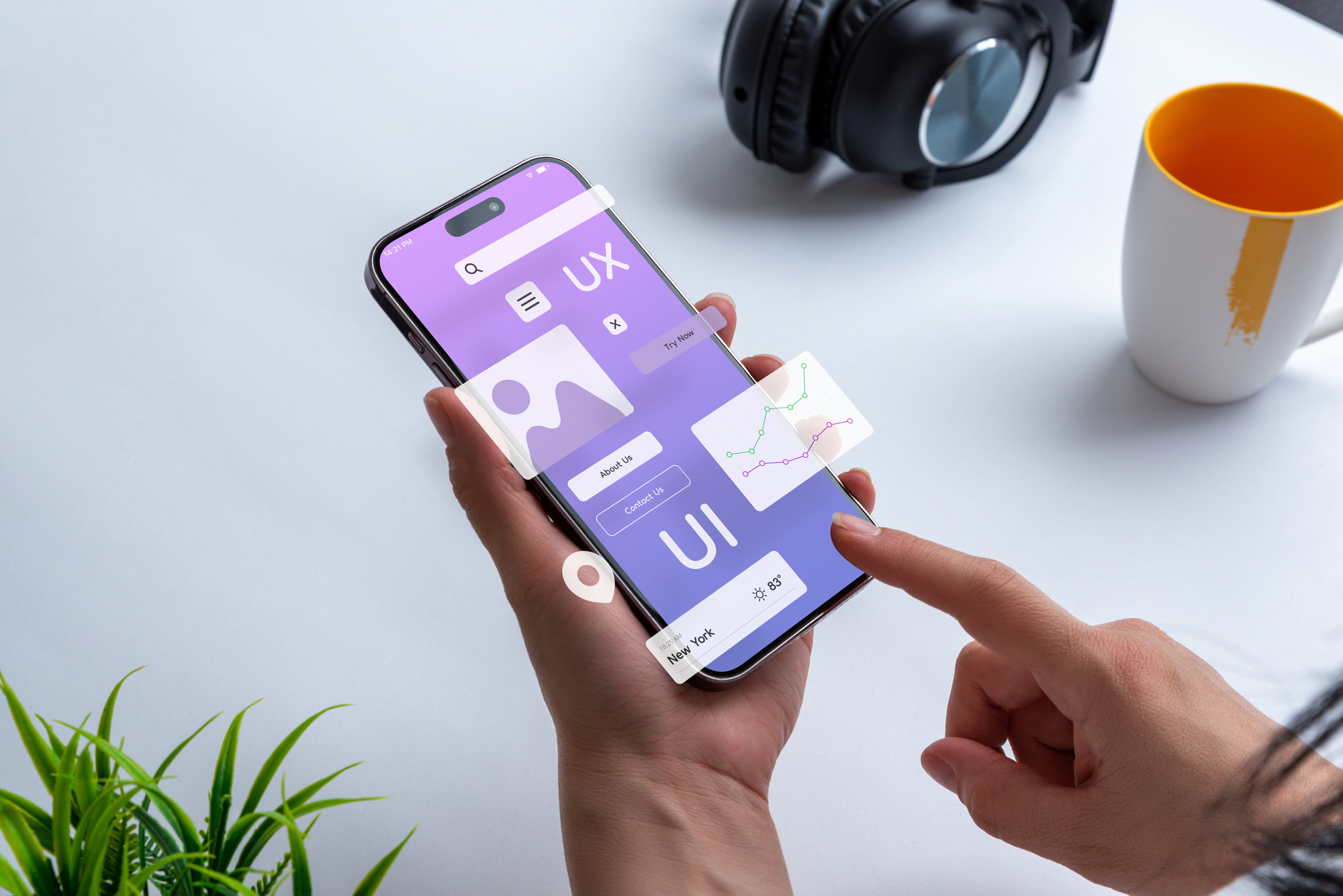Table of Contents
Nowadays, mobile apps are a big part of our everyday lives. Whether for banking, shopping, looking for entertainment, or trying to be more productive, there’s an app for just about everything. However, with so many apps out there, it’s important to make sure your app stands out from the rest. One way to do this is by providing an excellent experience for users, and that’s where effective mobile app testing comes in.
Why is Mobile App Testing so Important?
Think about it – how many times have you downloaded an app only to be disappointed by its poor performance, bugs, or lack of intuitive design? Chances are, you’ve uninstalled that app faster than you can say ‘glitch.’ A sub-par app can not only frustrate users but also tarnish your brand’s reputation. On the flip side, a well-tested, high-quality app can lead to increased user satisfaction, better ratings, and, ultimately, more downloads and revenue.
But what exactly is mobile app testing, and how can you ensure that your testing strategy is effective? Keep reading.
Understanding the Different Types of Mobile App Testing
Before diving into the details of effective testing through the help of digital testing services, it’s crucial to understand the various ways to test mobile apps. Each approach serves a specific purpose, and incorporating them into your testing plan is key to delivering a top-notch app.
- Functional Testing: This type of testing checks if the app’s features and functions work correctly across different devices, operating systems, and network conditions. It verifies that the app behaves as expected and performs its intended tasks without any hiccups or errors.
- User-Friendliness Testing: Have you ever used an app that was so confusing and counterintuitive that you wanted to give up on it? User-friendliness testing aims to prevent such frustrating experiences. It helps identify and fix any issues that might hinder the user’s ability to navigate and interact with the app easily. The goal is to ensure that the app is intuitive, user-friendly, and provides a smooth experience.
- Performance Testing: Imagine an app that takes forever to load or respond to your commands. Frustrating, right? Performance testing evaluates how well the app handles high-traffic or heavy usage scenarios. It checks if the app can run smoothly and efficiently under various load conditions, ensuring a lag-free experience for users.
- Security Testing: In today’s digital age, protecting user data is of utmost importance. Security testing helps identify and address potential vulnerabilities or weaknesses that could put your users’ sensitive information at risk. It ensures that your app is secure and follows best practices for safeguarding data.
- Compatibility Testing: With the vast number of mobile devices and operating systems available, it’s crucial to ensure that your app functions consistently across different platforms and configurations. Compatibility testing checks if the app works seamlessly on various device models, screen sizes, and operating system versions.
- Localization Testing: If your app targets a global audience, localization testing is essential. It verifies that the app’s content, language, and cultural nuances are appropriately adapted for different regions and markets. This testing helps ensure that users from diverse backgrounds can understand and use the app without any confusion or misinterpretation.
Now that we’ve covered the different ways to test mobile apps, let’s dive deeper into the art of effective testing and explore strategies to ensure your app meets the highest quality standards.

Building a Solid Testing Strategy
Effective mobile app testing starts with a well-thought-out plan. Here are some key things to consider when creating your testing approach:
- Define Your Testing Goals: Before you begin, ask yourself – what are you trying to achieve with your testing efforts? Are you aiming for an app that is completely error-free? Or are you more focused on ensuring a smooth and enjoyable experience for users? Maybe you want to achieve both goals. Clearly defining your objectives from the start will help you prioritize your testing tasks and allocate resources appropriately.
- Know Your Target Users: Who are the people you expect to use your app? What types of devices and operating systems do they commonly use? Understanding your target audience is crucial because it will allow you to tailor your testing approach to their specific needs and expectations. For example, if your app is designed for users in a particular age group or geographic location, you’ll want to ensure it is thoroughly tested on the devices and platforms they are likely to use.
- Create a Detailed Test Plan: Think of your test plan as a roadmap for effective testing. It should outline the various ways you’ll test your app, such as checking features and functions, ease of use, performance, security, compatibility across devices, and localization for different regions (which we discussed earlier). The plan should also specify the testing environments you’ll use, the specific test cases you’ll run, and the criteria you’ll use to determine whether a test has passed or failed.
- Use Automated Testing Tools: While manual testing is important, incorporating automated testing tools can streamline the process and increase efficiency. Tools like Appium, Espresso, and XCUITest can help you automate various testing scenarios, reducing the risk of human error and saving time. Automated testing is particularly useful for repetitive tasks or for testing across multiple devices and configurations.
- Adopt Continuous Integration and Continuous Deployment (CI/CD): In today’s fast-paced development environment, it’s essential to integrate testing into your development cycle. CI/CD practices ensure that your app is continuously tested and deployed, reducing the risk of errors and ensuring a smoother release process. With CI/CD, every code change is automatically built, tested, and deployed, allowing you to catch and fix issues early on.
By following these key elements when creating your testing plan, you’ll be well on your way to building a solid foundation for effective mobile app testing.
Real-World Testing: The Key to Success
While testing your app in a simulated environment is helpful, it can never truly replicate the wide range of real-world conditions and situations your app will encounter once it’s released. That’s why testing in the real world is so crucial – it exposes your app to the unpredictable and varied scenarios it will face in the hands of actual users.
Here are some powerful real-world testing strategies to consider:
- Beta Testing: Before the official launch, release a beta version of your app to a select group of users. This allows you to gather valuable feedback from real people using your app in their daily lives. Beta testers can identify issues, bugs, or areas for improvement that you may have overlooked during simulated testing. Their insights can help you refine and polish the app before releasing it to the wider public.
- Crowd Testing: Imagine having a diverse group of testers from all around the world, using your app on different devices, in different regions, and with varying usage patterns. This is the power of crowd testing. By engaging a global crowd of testers, you can uncover issues specific to certain locations, devices, or user behaviours that you may have missed otherwise. Crowd testing provides a more comprehensive and realistic view of how your app will perform in the real world.
- Field Testing: Sometimes, the best way to test an app is to take it out for a spin in the real world. Field testing involves using your app in various real-life scenarios, locations, and network conditions. This could mean testing it while commuting, at a busy cafe, or in areas with poor network coverage. Field testing helps you understand how your app performs under diverse and unpredictable circumstances, ensuring it can handle the challenges of the real world.
- User Testing: Who better to test your app than the very users it’s designed for? User Testing involves having your target audience interact with your app and provide feedback. These are the people who will ultimately be using your app, so their input is invaluable. User Testing can help you identify usability issues, areas where the app falls short of user expectations, or features that could be improved or added to enhance the overall experience.
By incorporating these real-world testing strategies into your testing plan, you’ll gain a deeper understanding of how your app performs in the hands of real users, in real-life situations. This invaluable insight will help you identify and address issues that might have gone unnoticed in a simulated testing environment, ultimately leading to a better, more robust, and more user-friendly app.
Continuous Improvement: The Key to Long-Term Success
Effective mobile app testing is not a one-time event; it’s an ongoing process that should be part of your app’s development lifecycle. As your app evolves and new features are added, it’s crucial to continuously test and refine your approach. Here are some tips for constant improvement:
- Listen to User Feedback: Pay close attention to reviews, comments, and feedback from your users. This information can provide valuable insights into areas where your app may be falling short, allowing you to prioritize your testing efforts accordingly.
- Stay Up-to-Date: The mobile app world is constantly changing, with new devices, operating systems, and testing methods emerging regularly. Stay informed about the latest trends and best practices to ensure that your testing strategy remains relevant and effective.
- Promote a Culture of Quality: Effective mobile app testing is not just the responsibility of your testing team; it should be a mindset embraced by everyone involved in the development process. Foster a culture of quality by involving all stakeholders in the testing process and promoting collaboration and knowledge-sharing.
- Continuously Improve Your Approach: Regularly review and refine your testing strategy based on your experiences, user feedback, and industry best practices. A flexible and adaptable approach will ensure that your testing efforts remain effective and aligned with your app’s evolving needs.
By following these tips, you’ll be able to continuously improve your mobile app testing approach, ensuring that your app remains high-quality, user-friendly, and successful in the long run.
Conclusion
When it comes to mobile app development, effective testing is not just a nice-to-have; it’s a must-have. By following the approaches outlined in this guide, you’ll be well on your way to delivering a top-quality, user-friendly app that stands out from the crowd. Remember, the key to success lies in a well-planned testing strategy, testing in the real world, and a commitment to constant improvement. So, what are you waiting for? Start testing, and watch your app take off!









